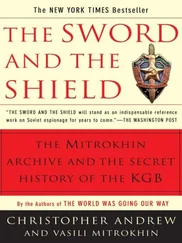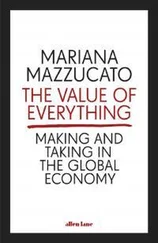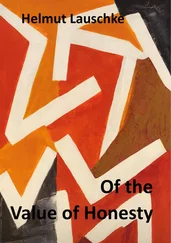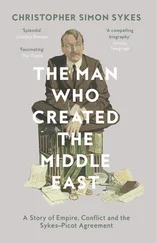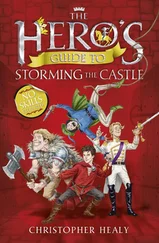Daymond John freely shares the story of his early brush with business failure. I heard the story from him when he was speaking to the Inside Track Forum, which is an event that STORE Capital annually sponsors for its customers to inspire and teach them. When looking back on his self-taught experience as an entrepreneur, Daymond wishes that he had started FUBU with a greater degree of financial literacy. His first big financial lesson, which nearly cost him his business, was this: “What Is Business Investment?” This important question is where business model frameworks start and is the first of six universal financial variables that collectively guide investor returns .
It is common for people to think of business investment as chiefly plant and equipment. Such a notion is also somewhat consistent with accounting terminology, where assets are divided between those that are “long-term” and those that are “short-term,” or “current.” When I ask students to define business investment, they think predominantly of long-term assets, such as real estate or machinery. Daymond John knew investment to be more than this. He had eight sewing machines. But then he also had to purchase the fabric and pay the eight tailors to sew his garments. In accounting terms, both these costs together would be included in inventory. So, Daymond knew he had to make inventory and equipment purchases. However, he had to tie up his cash in raw material inventory for 120 days before he took possession of it. In accounting terms, that would be a deposit. This meant that, while waiting for the fabric to arrive, he would still have to carry some operating costs. And, once the completed garments shipped, he would have to wait another 120 days to be paid. In accounting terms, that would be classified as an account receivable. So, altogether, the business investment needed to operate FUBU on an ongoing basis included five major components:
1 Sewing machines and other equipment.
2 Deposits paid by the company for the raw material inventory.
3 Inventory, which included the combined cost of the fabric and labor to produce the garments.
4 Accounts receivable.
5 Cash
The last business investment component is cash, which is needed to absorb start-up costs like general and administrative costs, utilities, and other operating costs to be borne prior to the receipt of revenues. Cash is also a good thing to have in case of unforeseen expenses or delays in the corporate cash flow cycle caused by elevated levels of inventory or delays in accounts receivable collection. All good business plans need to have margins for error, and the most important margin of error insurance is centered in liquidity access.
If, for the sake of argument, Daymond John fulfilled nothing but this one-time order for his product, then the business investment would be effectively liquidated as the deposits went away upon inventory receipt, the inventory vanished upon its sale, and the receivables likewise disappeared upon their collection. Effectively, the company would profitably liquidate as the cash flow cycle played out. However, over time, FUBU received and fulfilled many orders, and went on to achieve sales of $350 million within a decade. These investments not only recurred but grew far larger over time.
Daymond needed money to carry these five major investment components that comprised his business investment.
As FUBU grew and achieved success, the relative amount of business investment required would be expected to decrease, and the company's liquidity would increase. That is because the sellers of fabric would be less likely to require deposits from a successful and proven company. In fact, they might have offered payment terms for the fabric. Accounts payable to vendors are a reduction from business investment because they are unsecured claims on a business and often cost nothing. The vendor gives you title to the fabric in exchange for an unsecured, often free, obligation to pay at a later date.
With success would also come bankability, which would allow the company to have banks provide letters of credit that would guarantee vendor payments without tying up company cash.
Had Daymond John been able to secure his initial inventory without tying up cash for 120 days, his liquidity would have improved. Better still, if he had trade vendor terms on his inventory that would enable him to pay for the inventory long after he received it, his liquidity would have improved a lot. Had his buyers been willing to pay faster than 120 days after merchandise receipt, that would also stand to raise his liquidity.
Finally, there is often the potential for businesses to radically alter their operating model. For instance, had Daymond John been able to have the seller of the fabric also fabricate the garments, deliver them to him, wait for payment, and have his customers agree to pay faster, he would have had greatly improved liquidity, together with less invested in sewing machines and staffing.
In essence, he would have adopted an “asset light” operating model that would require even less corporate liquidity, with fixed overhead and equipment costs transformed into less risky variable expenditures. Operating model creativity entails considering such options and exploring their feasibility to improve business model efficiency that can elevate the potential for value creation.
With all these possible changes to his business model, Daymond John stood to lower his required business investment, potentially materially.
Businesses have diverse cash flow cycles. In the case of a manufacturer like FUBU, it is common to have vendor trade payables that are small relative to the inventory and accounts receivable required to operate the business. A restaurant business will be just the opposite. The cash receipts from sales are immediate. Inventory levels are low because the inventory tends to be sold every three days or so. Meanwhile, the trade payables from food vendors might come with 30-day terms, meaning that you could literally sell your inventory 10 times over before ever paying for the first inventory you had.
Accountants vs. Entrepreneurs
If you think in accounting terms, you probably think of business investment as the “left side” of a balance sheet, which is where the assets are. I do not view business investment in this light. I am a finance person, which is the foundation for accounting, but one step removed.
Finance is like music; it is a universal language, whereas accounting is not .
There exist multiple global accounting standards, which are subject to frequent changes. The dominant standards are US Generally Accepted Accounting Principles (GAAP) and International Financial Reporting Standards (IFRS), which is used by much of the rest of the world. With that said, GAAP is widely used globally among larger companies owing to its requirement for a US stock exchange listing. Accounting was devised to represent financial reality to investors and financial statement readers. However, the reflection will always have material imperfections. This is why there are so many analysts who make a living from interpreting financial statements. This is why financially inclined value investors pore over financial statements to see what the markets cannot.
From a finance perspective, total assets as they appear on a corporate financial statement do not equal business investment. To arrive at business investment, a financial analyst must ignore all the non-cash accounting conventions. This means that items like “accumulated depreciation,” which is designed to illustrate the cumulative “wear and tear costs” of a business on its hard assets, need to be added back. It's not that assets don't have wear and tear; they do. It's that the wear and tear does nothing to alter what the assets originally cost. Wear and tear does not alter the business investment. Since the accounting profession has added numerous non-cash financial reporting conventions over the years, you can be busy eliminating balance sheet items.
Читать дальше




